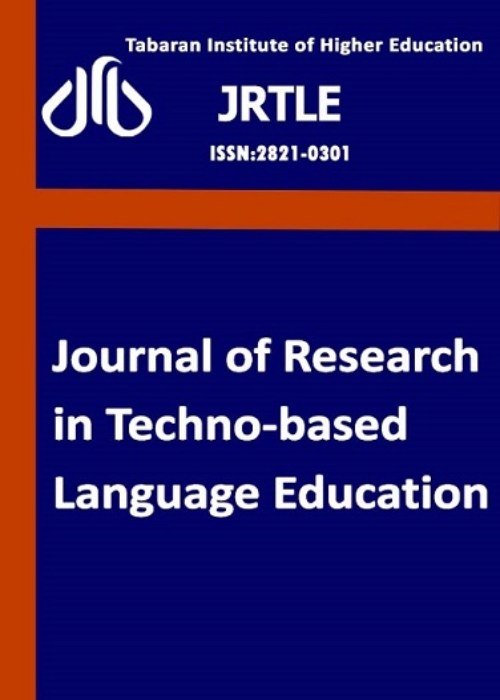فهرست مطالب
Journal of Research in Techno-based Language Education
Volume:2 Issue: 1, Mar 2022
- تاریخ انتشار: 1401/03/09
- تعداد عناوین: 3
-
Pages 1-14Technological advancements affect the development of audiovisual translation (AVT). Technology has created a situation in the world of moving pictures within which subtitling and dubbing take an important role in optimizing communication. Despite the growing interest in AVT, song subtitling and dubbing remained on the periphery of Translation Studies. The present study aims to determine the differences that may exist between Iranian translators’ strategies for dubbing and subtitling the songs of animation movies based on Schioldager et al.’s (2008) twelve micro-strategies. The corpus of this study consists of three musical animations which are Strange Magic, Moana, and Frozen 2. In the selected animations 27 songs were selected. The data are analyzed using an independent sample t-test. The results showed there is a significant difference between the frequencies of the strategies employed in the dubbed and subtitled versions of the songs. Thus, “Deletion”, “Oblique Translation”, “Substitution”, and “Adaptation” are the most frequent micro-strategies used in dubbing songs. However, “Direct Translation” and “Addition” are the most commonly used strategies in subtitling songs in animated musical movies. The results reveal translators in dubbing English songs not only transfers the dialogue from the source text but also considers the source text idea. Therefore, they more frequently replace one or more terms with another term or replace one meaning with another when dubbing songs into the Persian language. The findings of this study offer a pedagogical implication for translation students, subtitlers, fansubbers, and fandubbers to recognize better the subtitling and dubbing strategies of the songs.Keywords: dubbing, Iranian Translators, song, Subtitling, translation strategies
-
Pages 15-24Instagram is considered one of the most famous virtual social networks among all ages of human beings. Nowadays, the extensive popularity of social networking websites such as Instagram has made new chances for Iranian English teachers and learners. Accordingly, the present study tries to investigate whether Instagram would be a useful learning instrument of vocabulary for Iranian male EFL learners at the pre-intermediate at Shokouh Enghelab English Academy in Babol, Mazandaran, Iran. The participants in this study were 50 male EFL learners, ranging from 8-15 years old, selected randomly from 100 cases. After checking the homogeneity of the participants they were divided into two groups. The participants in the experimental group were learning English vocabulary through ten Instagram pages for four weeks (12 sessions and 25 minutes per a session). But the participants in the control group were only taught by the teacher. Pretest and posttest were applied to evaluate learners' knowledge about vocabulary during the session. Based on the research data, Instagram learning brings valuable technological and pedagogical advantages for Iranian EFL learners despite the popularity of social networks. It has a significantly positive effect on the development of vocabulary learning. The findings of this paper can be helpful in the English methodology issue.Keywords: EFL learners, Instagram, Pre-intermediate Level, social network, Vocabulary
-
Pages 25-32Vocabulary learning is at the heart of language learning and language use. In fact, it is what makes the essence of a language. Having it in mind, most of the students always complain about lexical problems and unfortunately the students and sometimes the teachers are unaware of the different tools, which can help the students in order to learn vocabularies and improve vocabulary retention. A useful tool for learning and teaching vocabularies is a tool that uses authentic examples and sentences to enhance learners' comprehension. Concordancing software is one of these digital tools that enables language learners to explore billions of real-world materials. In this regard, the present study was conducted to investigate whether the use of concordancing software has a significant effect on vocabulary retention or not? In order to gain this purpose, a sample of 54 female students took part in this study. Participants were randomly assigned in two equal experimental and control groups. Before starting the treatment, the researcher gave the pretest to both groups to check their vocabulary knowledge. Then the treatment sessions were started for both groups, which lasted 12 sessions and during this time the vocabulary of each lesson waa taught by using concordancing software to the experimental group and by using list of vocabulary to the control group. After the treatment sessions, the posttest was administered. The results of the comparison proved that the use of concordancing software improved learners' vocabulary retention. The outcomes have the potential to affect learners' performance.Keywords: CALL, DDL, corpus linguistics, concordancing, retention


